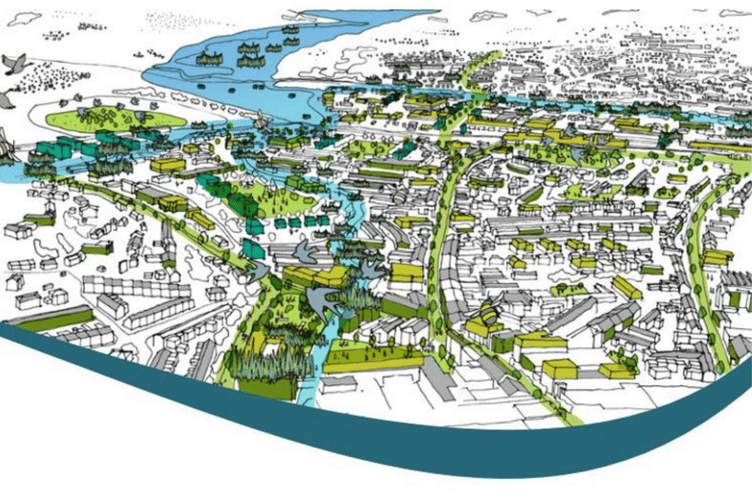NO MORE new housing is to be recommended in Dawlish and Teignmouth before 2040, according to details in a submission to update the Local Plan.
Teignbridge Council’s proposed submission for the next phase of the local plan is due to go before the full council today (Thursday).
It says flood risks and drainage issues in Dawlish and transport and air quality limitations in Teignmouth suggest both towns should not be included in any further housing development for the district.
The submission, which is to be discussed by members today, includes a proposal for ‘no further residential allocations for either Dawlish or Teignmouth’.
The 176-page document will be open for public consultation before being submitted to the Planning Inspectorate for review and public examination.
The submission features a section on development in both coastal towns.
It says the ‘historic seaside towns’ of Teignmouth and Dawlish are the district’s second and third largest settlements and provide a good range of services and facilities for their communities.
But is says both towns have ‘limited’ employment opportunities and are popular commuter towns.
Both towns are mainly accessed by the A379 which runs parallel to the coastline but there are said to be ‘constraints’ at various points along the route, including Air Quality Management Area in Teignmouth and bottlenecks in some of the villages between Dawlish and Exeter.
The report says options to improve capacity are ‘very limited’ and recent trials to address issues have not been successful.
In Teignmouth, additional growth is constrained by its topography, strategic cirl bunting breeding territories and access, with all routes feeding into Bitton Park Road.
The report also admits that Dawlish has seen ‘significant growth in recent years’ with a strategic development at Secmaton Lane, currently under construction.
Although it says there are possible future options for further growth in the town, mainly to the north, the whole area is designated as a Critical Drainage Area.
This has been designated by the Environment Agency due to flood risk following prolonged or intense rainfall when the Shutterton Brook is unable to drain to the estuary via its outfall due to ‘tide lock’ conditions.
In ‘tide lock’ conditions, flood risk is dependent upon runoff volumes in the Shutterton Brook and the availability of flood water storage capacity at Dawlish Warren.
These risks are said to increase significantly in line with predicted climate change and sea level rise.
The report states: ‘Currently, there is insufficient information to agree how this flood risk can be appropriately managed and without an identified solution there is no guarantee that sites within the CDA would be deliverable within the plan period.
‘For these reasons combined, this plan makes no further residential allocations for either Dawlish or Teignmouth.’
The report says: ‘It is anticipated that further work will continue to better understand and resolve the issues currently preventing development as part of future plan preparation.’
In the meantime, the 2014 Local Plan policies which allocated ‘a significant amount of housing growth in Teignmouth and Dawlish’, will remain in place.
The full update to the plan will be heard today.
In the submission, Cllr Gary Taylor, executive member for planning, said: ‘I firmly believe this is an ambitious, forward-looking new Local Plan, that will help deliver better and more environmentally sustainable development in our district over the next 20 years.’
The plan suggests an approximate distribution of new homes across the district should be: Newton Abbot and Kingsteignton Garden Community 37 per cent; edge of Exeter 46 per cent; coastal and rural towns five per cent: villages 12 per cent.



.jpeg?width=209&height=140&crop=209:145,smart&quality=75)

Comments
This article has no comments yet. Be the first to leave a comment.